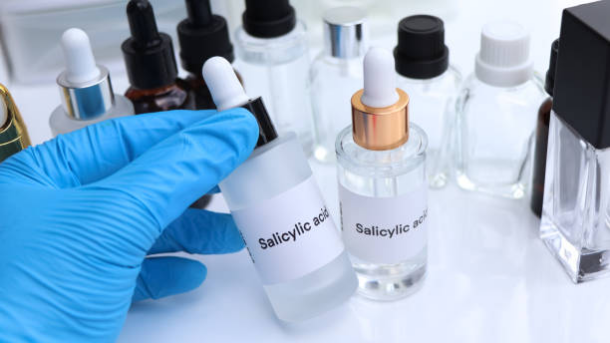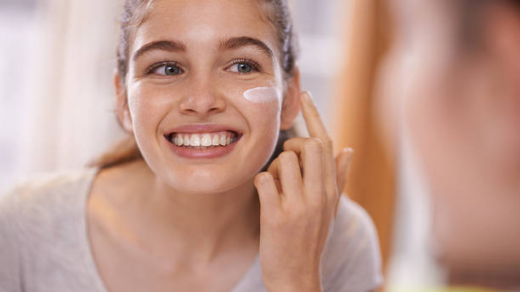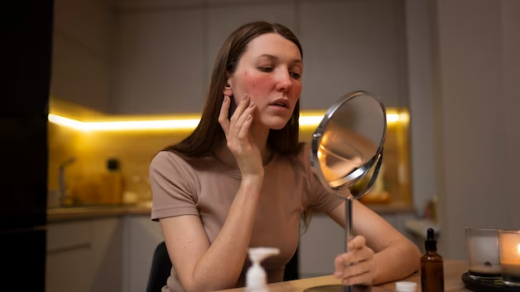When it comes to tackling acne, two of the most popular over-the-counter treatments are salicylic acid and benzoyl peroxide. Both ingredients are proven to be effective, but which one is better for your specific skin concerns? This article will compare salicylic acid and benzoyl peroxide, outlining their benefits, drawbacks, and ideal uses.
What is Salicylic Acid?

Salicylic acid is a beta hydroxy acid (BHA) that is especially effective in treating acne. It works by exfoliating the skin and cleaning out pores, reducing the likelihood of clogged follicles. Salicylic acid also has anti-inflammatory properties, helping to reduce redness and swelling associated with pimples.
Most commonly found in cleansers, toners, and spot treatments, salicylic acid is ideal for treating blackheads and whiteheads. Its ability to penetrate oil-laden pores makes it a go-to ingredient for those with oily or combination skin. However, it might not be as effective for severe or cystic acne.
What is Benzoyl Peroxide?
Benzoyl peroxide is an antibacterial agent that kills the bacteria responsible for acne. In addition to its bactericidal properties, it helps remove excess oil and dead skin cells. This dual action makes it highly effective in treating inflammatory acne, including papules, pustules, and cysts.
Benzoyl peroxide is available in various concentrations, typically ranging from 2.5% to 10%. It is common to find this ingredient in gels, creams, and cleansers. However, it can be quite drying and may cause irritation, especially for those with sensitive skin.
Effectiveness and Side Effects
Both salicylic acid and benzoyl peroxide come with their own set of side effects and vary in effectiveness based on the type of acne they target. Salicylic acid is known for being gentle yet effective in preventing mild breakouts, but over-usage can lead to dryness and peeling.
On the other hand, benzoyl peroxide is more aggressive and works well on more severe forms of acne. However, its potency can result in side effects like excessive dryness, redness, and even peeling. Both ingredients should be used as directed, and starting with lower concentrations can help your skin adjust without causing irritation.
How to Choose Between Salicylic Acid and Benzoyl Peroxide
Choosing between salicylic acid and benzoyl peroxide largely depends on your skin type and the severity of your acne. If you suffer from occasional blackheads and whiteheads, salicylic acid can help keep your pores clean. For more inflamed and severe acne, benzoyl peroxide may offer quicker and more effective results.
- For sensitive skin: Opt for salicylic acid due to its gentler exfoliating properties.
- For moderate to severe acne: Benzoyl peroxide’s antibacterial properties can be more effective.
- For oily skin: Either ingredient can be suitable, but always patch-test first to ensure no adverse reactions.
- For combination skin: Consider using salicylic acid in oily areas and benzoyl peroxide for inflamed spots.
Can You Use Both Together?
While it is possible to use both salicylic acid and benzoyl peroxide, combining them should be done cautiously. Using both simultaneously can increase the risk of skin irritation and dryness. If you choose to incorporate both into your routine, consider using them at different times of the day or on different areas of your face.
For example, you can use a salicylic acid cleanser in the morning to keep pores clear and apply a benzoyl peroxide spot treatment at night for active breakouts. Always moisturize after application to maintain your skin’s hydration levels and protect the skin barrier.
Conclusion
Both salicylic acid and benzoyl peroxide are potent acne-fighting ingredients, each effective in their own ways. Salicylic acid excels in preventing and treating blackheads and whiteheads by keeping pores clear, while benzoyl peroxide is more effective against inflamed acne due to its antibacterial properties. Your choice will largely depend on your skin type and the nature of your acne. Remember, it’s always best to patch-test new products and consult with a dermatologist to customize an acne treatment plan that’s right for you.
FAQs
1. Can I use salicylic acid every day?
Yes, salicylic acid can be used daily. However, start with a lower concentration to see how your skin reacts and gradually increase. Overuse can lead to dryness and peeling, so adjust based on your skin’s response.
2. Is benzoyl peroxide safe for all skin types?
Benzoyl peroxide is generally safe but can be harsh on sensitive skin. Always start with a lower concentration and patch-test before incorporating it fully into your routine.
3. Can salicylic acid help with cystic acne?
Salicylic acid is less effective for cystic acne compared to benzoyl peroxide. It is better suited for treating and preventing blackheads and whiteheads.
4. How long does it take to see results from benzoyl peroxide?
Results from using benzoyl peroxide can be seen within 4 to 6 weeks. Consistent use is important, and combining it with a proper skincare routine can enhance its effectiveness.
5. Should I moisturize after using these acne treatments?
Yes, moisturizing is essential to maintain skin hydration and protect the skin barrier, especially when using drying ingredients like salicylic acid and benzoyl peroxide.



